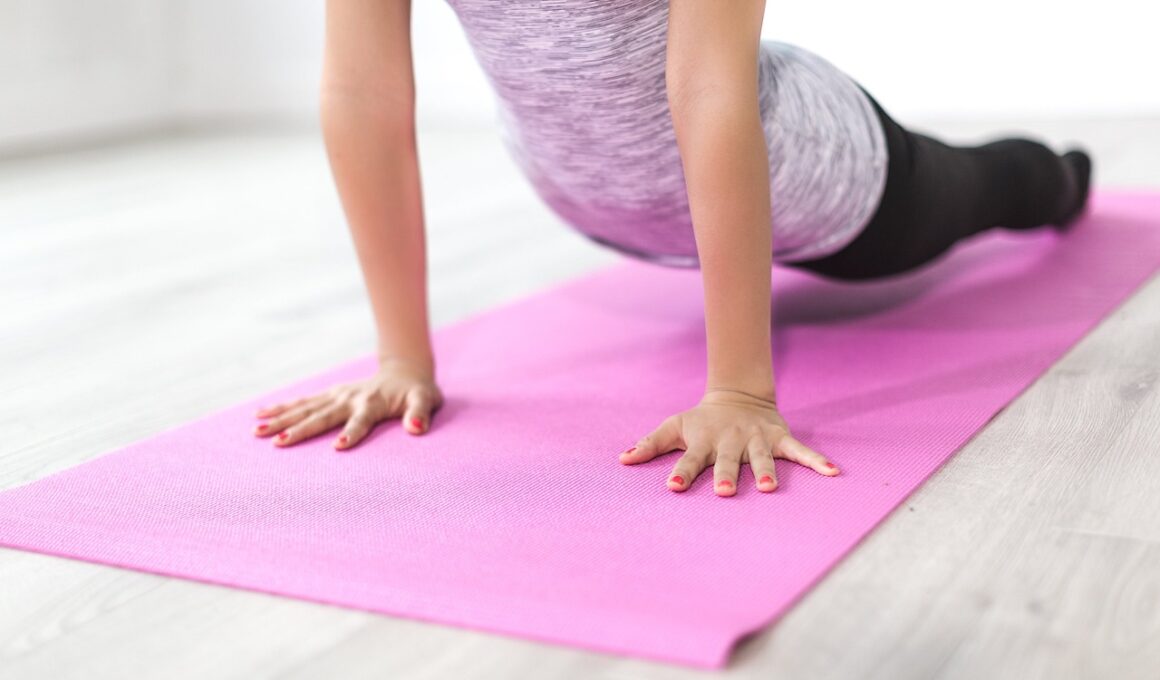Creating a Weekly Flexibility Schedule for Golf Beginners
As a beginner golfer, enhancing your flexibility can significantly improve your performance on the course. A well-structured flexibility program is essential for maintaining mobility and preventing injuries while swinging. In this article, we will guide you through creating a weekly flexibility schedule tailored specifically for new golfers. By dedicating time each week to improving your flexibility, you can increase your range of motion, which is key to a powerful golf swing. Start by assessing your current flexibility levels to identify areas that need improvement. Consider using basic tests, such as toe touches or the butterfly stretch, to measure how flexible you currently are. With this baseline, set achievable flexibility goals that allow for steady progress. Remember that consistency is crucial for seeing results. Aim to dedicate at least 15-20 minutes to flexibility exercises each day as part of your golf training regimen. Incorporate a mix of static and dynamic stretches that target key muscles used in golfing, such as the legs, back, and shoulders. This will set you up for success in enhancing your overall game.
There are various stretches that beginners should focus on to enhance their golf-specific flexibility. To maximize improvement, aim to practice these stretches regularly throughout the week. A great starting point consists of exercises such as the standing quad stretch, hamstring stretch, and torso twists. These movements target critical areas needed for a fluid golf swing. Integrating these stretches into your daily routine can help reduce stiffness and improve your performance. Perform each stretch slowly and hold for a minimum of 20-30 seconds without bouncing. This approach promotes the greatest increase in flexibility and also helps relax the muscles being stretched. Always remember to breathe evenly during your stretches to enhance the relaxation process. To improve your overall results, consider scheduling flexibility sessions at least three times a week, spreading them throughout your week. Regularly stretching, particularly after your golf practice, can promote longevity in the sport and prevent potential injuries as you play. As you become more comfortable with these exercises, begin to increase the duration and intensity of your stretches to further enhance your flexibility.
Sample Weekly Flexibility Schedule
Having a clear weekly schedule can greatly assist your commitment to flexibility training. Below is a sample plan designed specifically for golf beginners. On Mondays, focus on upper body stretches, including shoulder stretches and side bends. Spend this session on carefully executing the stretches to ensure comfort and effectiveness. Tuesdays should be dedicated to lower body flexibility exercises, like calf and hip flexor stretches. This setup allows your body to recover while giving special attention to major muscle groups used during golfing. On Wednesdays, perform a combination of both upper and lower body stretches for a balanced approach. Consider incorporating yoga or Pilates on Thursdays; these styles of flexibility training have proven effective for golfers. Fridays can involve a lighter session with focus on mobility exercises. Plan to have active rest days on Saturdays and Sundays, engaging in light walking or using a foam roller. Be sure to listen to your body and adjust your routine according to your comfort level to avoid injuries and promote continued progress.
Including variety in your flexibility training is crucial to keeping your routine engaging. This will help you stay motivated over time. As mentioned, consider integrating yoga or Pilates sessions into your weekly schedule. Both practices emphasize flexibility, balance, and core strength, which all improve golf performance. Yoga introduces beneficial poses such as downward-facing dog and cobra stretches, which enhance flexibility and relaxation. In contrast, Pilates focuses on core stability while generating long, lean muscles. Each practice uniquely enhances your overall body awareness and flexibility. Furthermore, don’t hesitate to mix in dynamic stretches before your practice or games to warm up. Leg swings, arm circles, and trunk rotations prepare your muscles for action. These stretches can prevent injuries and improve your swing mechanics. Be sure to modify each exercise as necessary based on your individual needs and limitations. Experiment with various workouts to see what resonates with you. Ultimately, the goal is to find a daily flexibility routine that becomes second nature and substantially contributes to your golf game improvement.
Tracking Progress and Adjusting Goals
To ensure continuous improvement in your flexibility program, make it a habit to track your progress. By keeping a journal or log, you can note how each stretch feels and any increases in your range of motion. Recording this data motivates you and helps adjust your goals as you progress. Set short-term objectives that are realistic and attainable to stay encouraged throughout the process. For instance, if you can now touch your toes comfortably, try extending that stretch further over time. Each week, evaluate how you feel during exercises and whether you notice any changes. You may also want to take pictures to visually represent changes in flexibility over time. As you complete various stretches, continually reassess what works best for you and modify your routines as needed. In some cases, you may find certain stretches provide better results than others, so prioritize those. Remember that flexibility varies by individual, so avoid comparing yourself to others. Focus on your journey, and be patient as you work towards greater flexibility and improved golf performance.
To supplement your flexibility training, it’s crucial to maintain an overall healthy lifestyle. Adopting good nutrition can aid in maintaining muscle recovery and promoting greater levels of energy needed for your training sessions. Including plenty of vegetables, fruits, lean proteins, and whole grains in your diet can support flexibility goals. Also, staying adequately hydrated is integral; water is vital for muscle recovery and maintaining joint health. Aim to consume sufficient water during your daily routines as well. Furthermore, incorporating strength training workouts into your weekly routine will bolster your overall physical condition. By balancing flexibility with strength, you’ll encourage better overall performance in the game of golf. Even simply engaging in resistance training twice a week can help improve muscle strength, supporting your flexibility goals. Additionally, remember to prioritize sleep and recovery, as these factors play a critical role in your athletic abilities. A well-rested body recovers better and achieves consistent performance improvements over time. By incorporating these lifestyle elements, you lay a solid foundation that complements your flexibility training.
Conclusion: Commitment Leads to Improvement
In summary, committing to a weekly flexibility schedule for golf beginners is essential for enhancing performance and preventing injuries. By dedicating consistent time to flexibility exercises and following a structured approach, golfers can progressively improve their overall game. Incorporating a variety of movements targeting multiple muscle groups promotes better range of motion. It is important to listen to your body, adjusting exercises as needed to ensure you stay comfortable and avoid overextending yourself. Focused attention on flexibility helps you build strength as well, leading to a more powerful swing. This balance, combined with healthy habits, creates a comprehensive golf training routine. Track progress in both flexibility and comfort levels to adjust your goals regularly; personal growth is the best indicator of success. As you embrace your flexibility journey, remember that patience and consistency are key attributes in making lasting improvements. With time, you will notice the benefits reflected in your golf game. Enjoy the process and the journey as you progress. Golf is a rewarding sport that grows with your commitment to better yourself.
Engaging in flexibility exercises can take your golf game to the next level! Aim to incorporate such exercises into your daily routine for optimal results. Consistency and dedication will significantly amplify your performance on the course.


